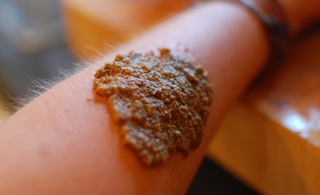You may know of flaxseed as a wonderful digestive healer and gentle laxative, or maybe as a cardio-protective herb full of nourishing, anti-inflammatory essential fatty acids. This beautiful, blue-flowering herb is also the source of linen, oil for oil paints, and the seeds we enjoy for their culinary and medicinal purposes.
While I myself enjoy a cup of warm water and flax as a daily digestive/anti-inflammatory tonic, today I want to focus on flax’s superb value as a first-aid herb. Flax poultices are invaluable for topical wound care, infections, and respiratory illnesses. They are easy to make and are sure to become a staple in your herbal first-aid kit.
Flax is the quintessential drawing herb in the herbal first-aid world. As a poultice, flaxseed drains wounds and draws out infection while killing pain, soothing inflammation, and healing the tissue. A flax poultice will draw splinters from the skin and absorb poison from bites and stings.
When applied to the chest during a respiratory infection, a flax poultice will draw congestion from the lungs and encourage expectoration. It also has an antitussive, anti-inflammatory effect for soothing coughs and moisturizing the throat and respiratory passages.
Flax poultices may be used for burns, ulcerated wounds, insect bites, boils, and skin infections. Flaxseed is favored by herbalists for chest poultices, either for asthmatic conditions or respiratory infections such as bronchitis.
For respiratory infections with thick, impacted mucous, flax may be combined with mustard seed to help liquefy mucous and aid in expectoration. However, a mustard seed poultice should not be applied directly to the skin.
To make a flax poultice, slowly add water to ground flaxseed until you have a spreadable paste. 1 part flax to 3 parts water is usually a good ratio. For a chest poultice, use hot water to further dissolve congestion in the chest (and add a comforting effect). For burns and inflamed ulcerations and irritations, cool water is best.
You can grind whole flaxseeds in a coffee grinder, or you can purchase pre-ground flax meal from a health food store. Be advised that ground flax meal must be refrigerated in an air-tight container, as it tends to go rancid quickly, just like flaxseed oil.
To apply the poultice, spread the paste over the injured area. Cover first with a layer of plastic, and then with a clean cloth. If you’re going to be up and about, secure the cloth by tying with a cotton strip or piece of gauze.
Leave the poultice on for about 3 hours and reapply as needed. Before applying the poultice, you may want to spread oil on the area to make the poultice easier to remove.










Wow! I really love what flaxseed can offer to our health. Thank God that He gave us this wonderful creature. Thumbs up!